Abstract
Pigeons worked on concurrent variable-interval, variable-interval schedules with the alternatives signaled by slides either containing trees or not. The schedules were designed to hold both overall and relative rates of reinforcement within narrowly constrained limits, and slides were quasi-randomly ordered each day. Responding to the two alternatives was well described by the generalized matching equation with substantial undermatching. Using an adaptation of the matching law, we estimated that the subjects were correctly classifying 82% to 95% of exemplars. The matching performance transferred to new exemplars of trees and nontrees with only slight generalization decrement. The pigeons appeared to be discriminating among exemplars even when the alternatives provided equal rates of reinforcement and the average relative performances were close to 50%.
Keywords: categorization, concepts, natural categories, choice, matching law, reinforcement, stimulus discrimination, pigeon
Full text
PDF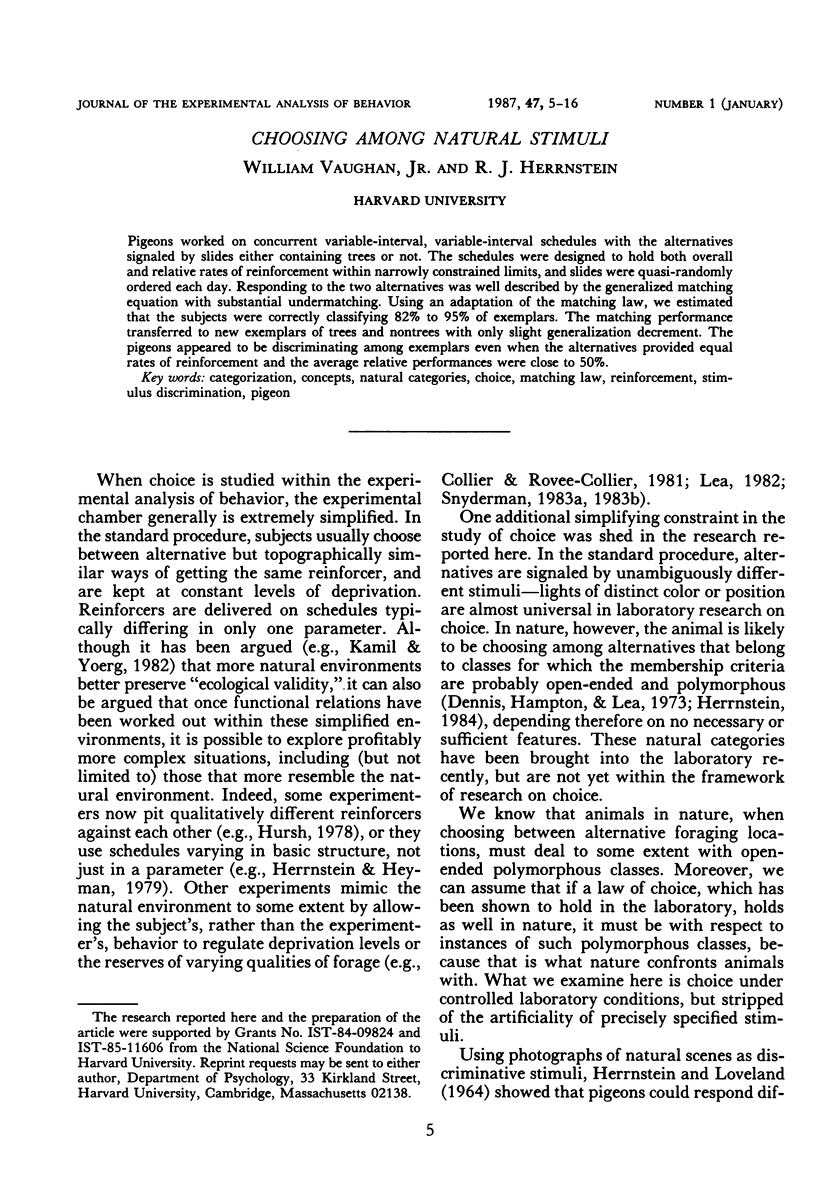
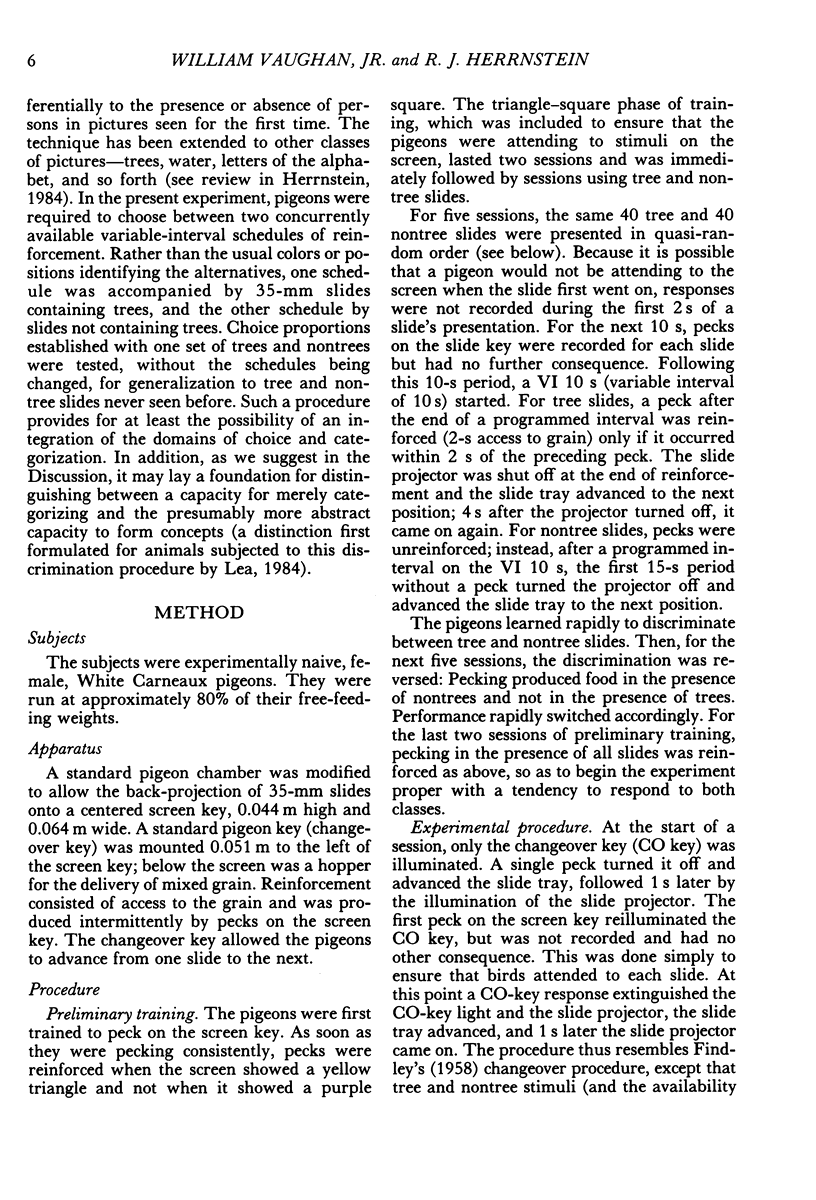

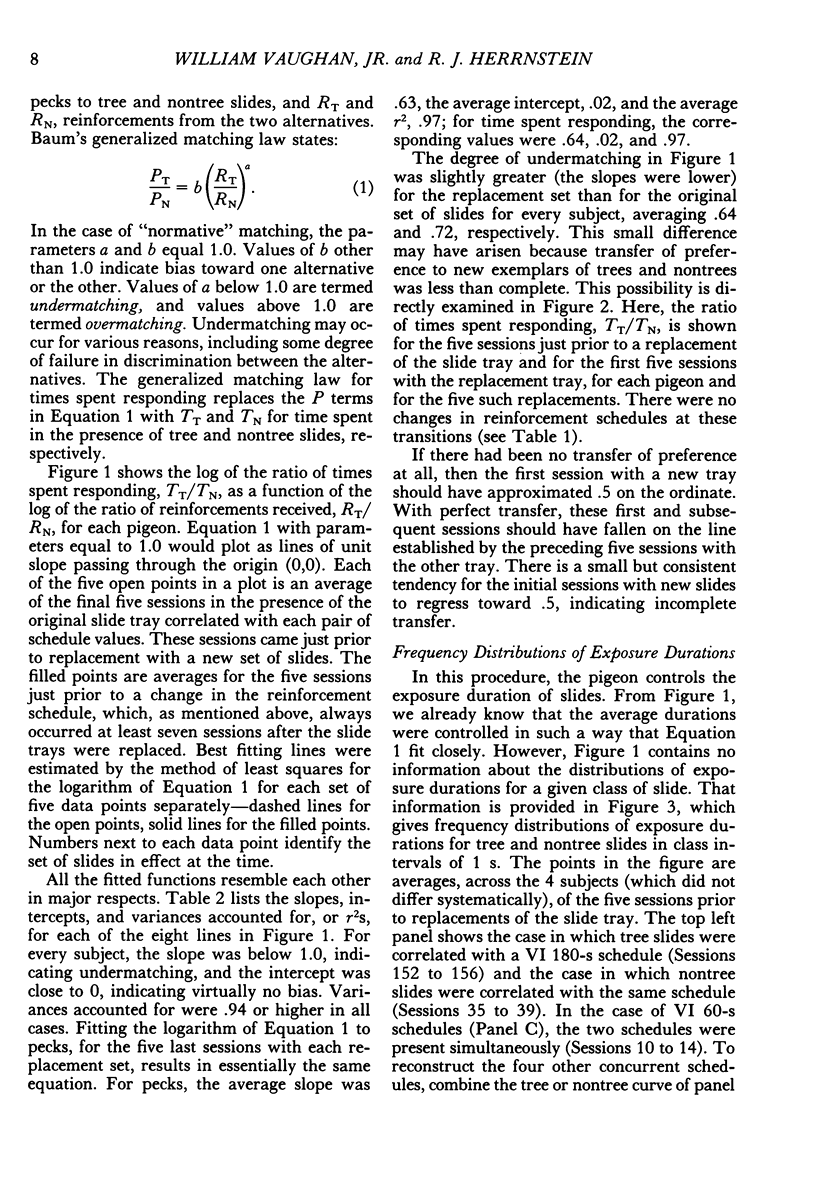
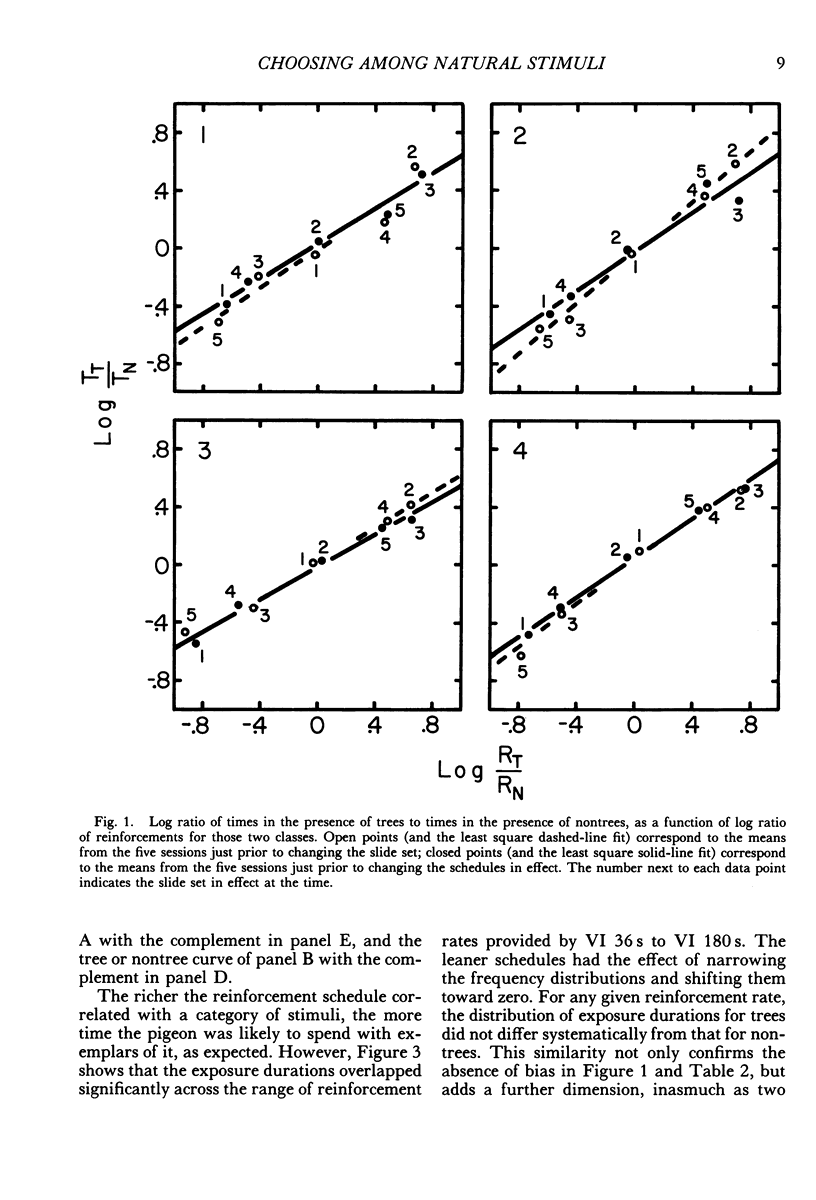
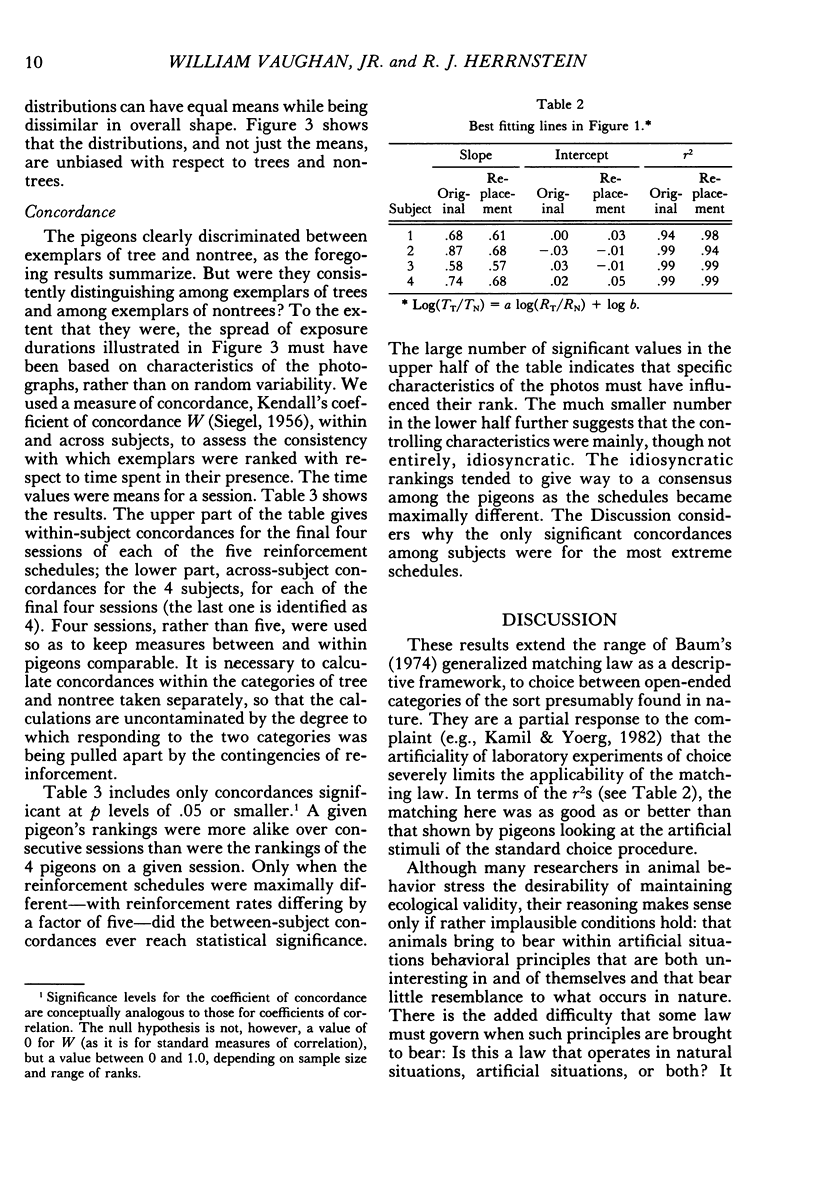
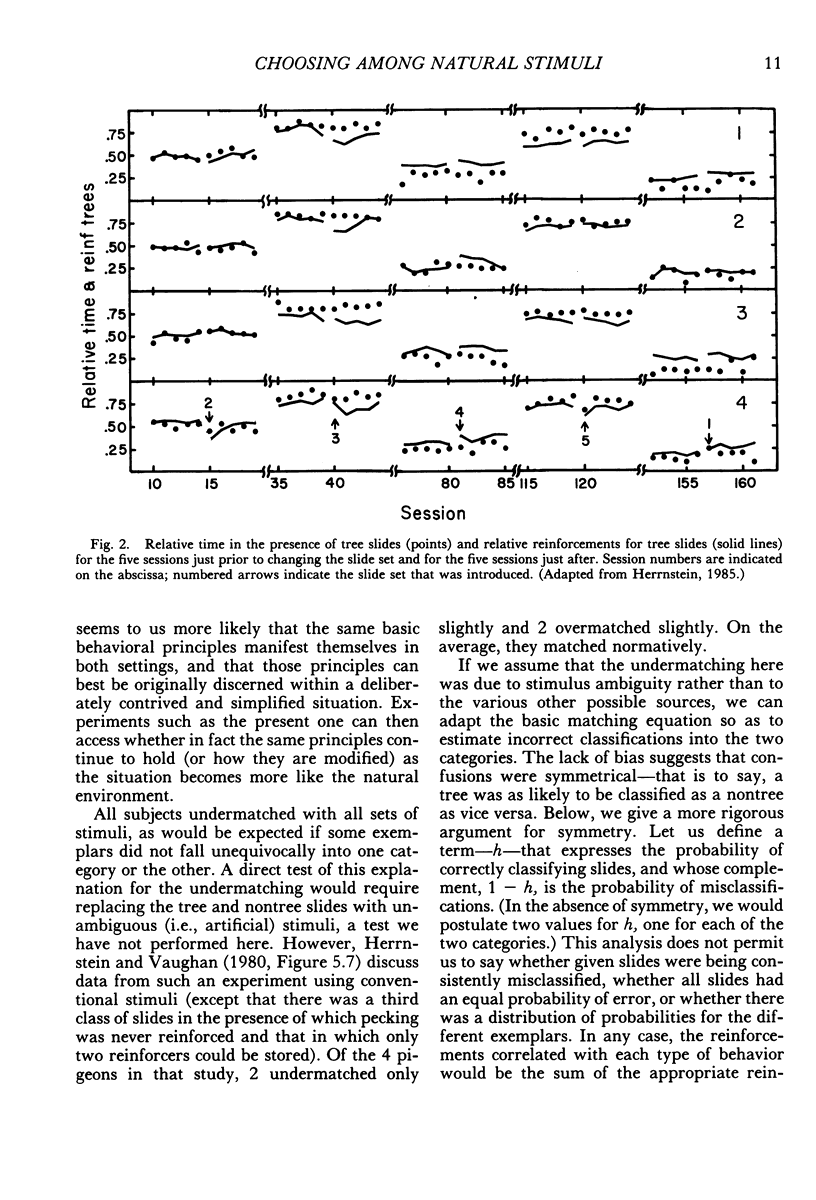
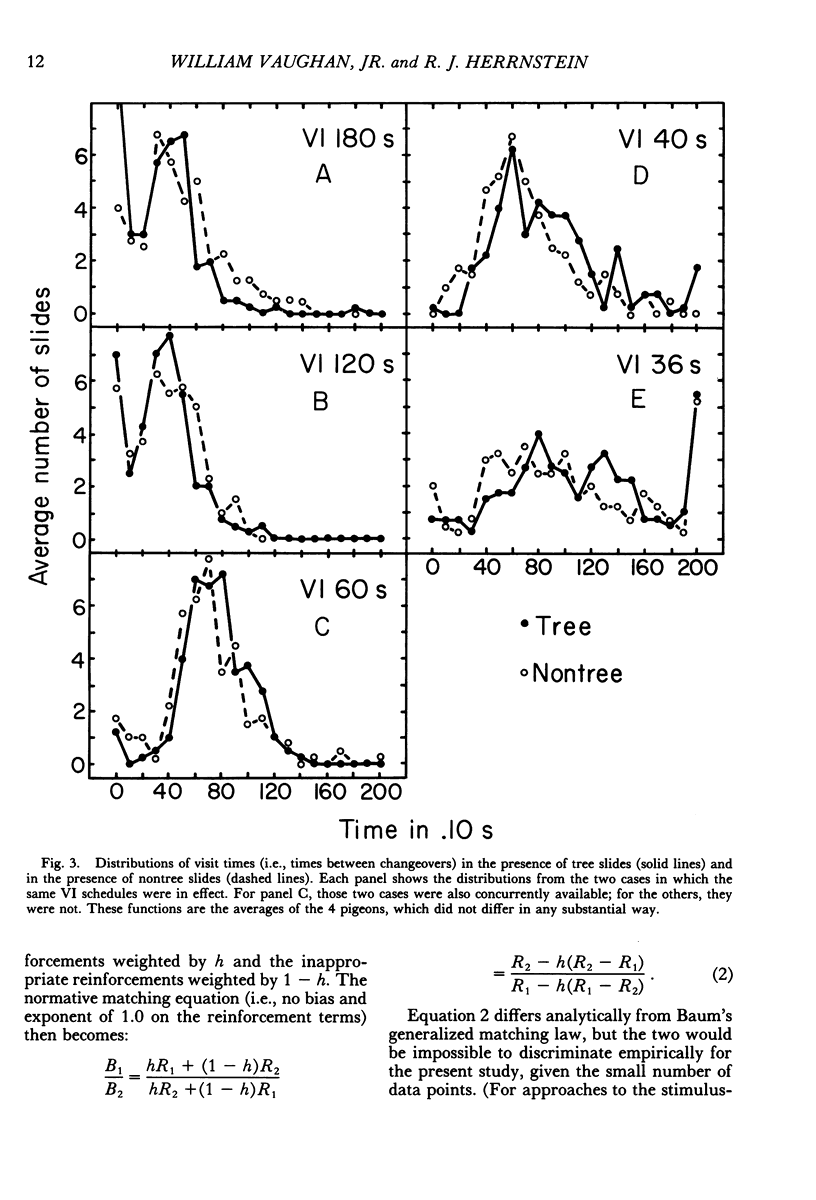
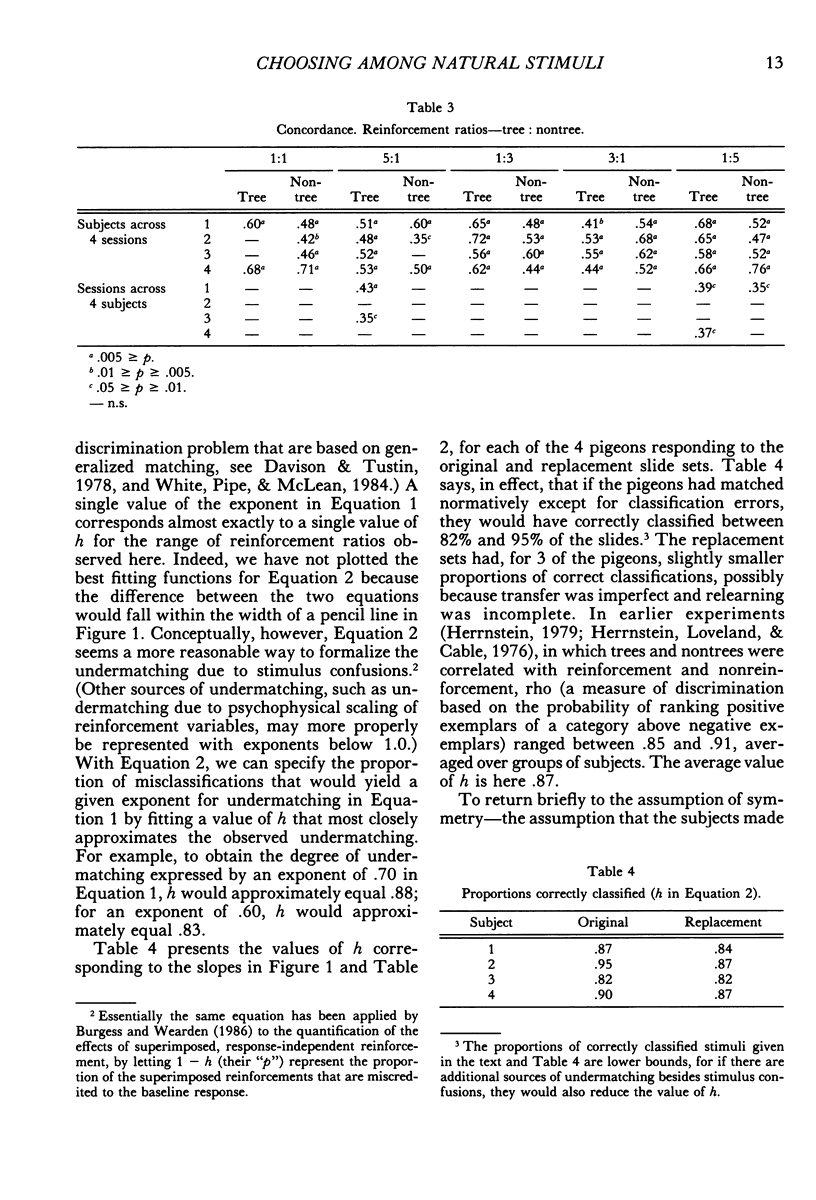
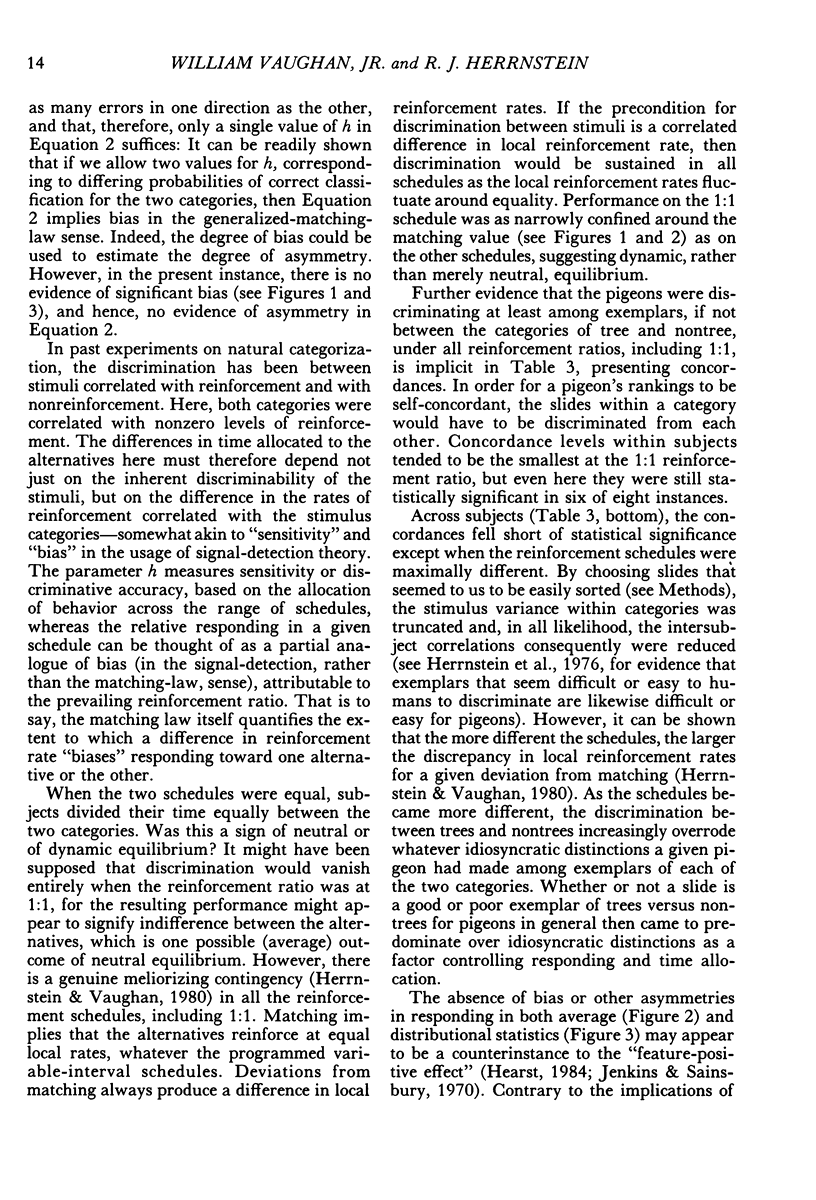
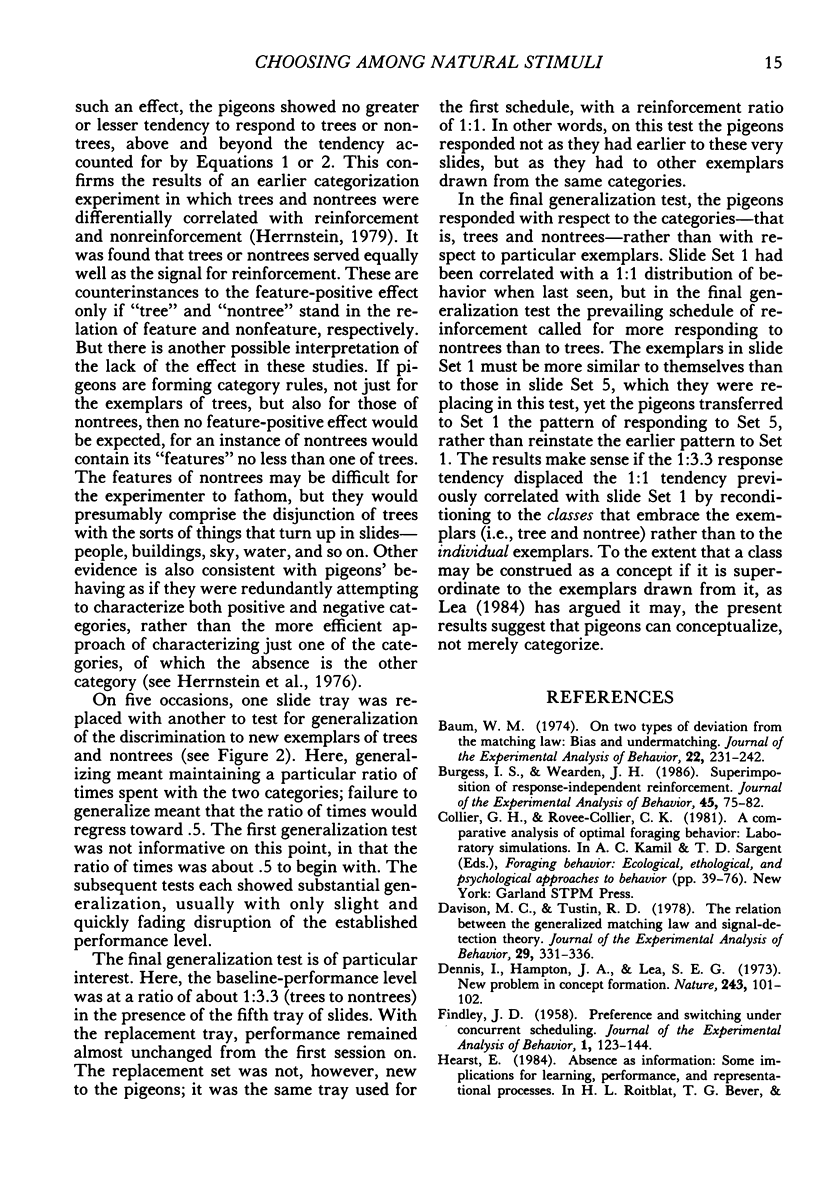
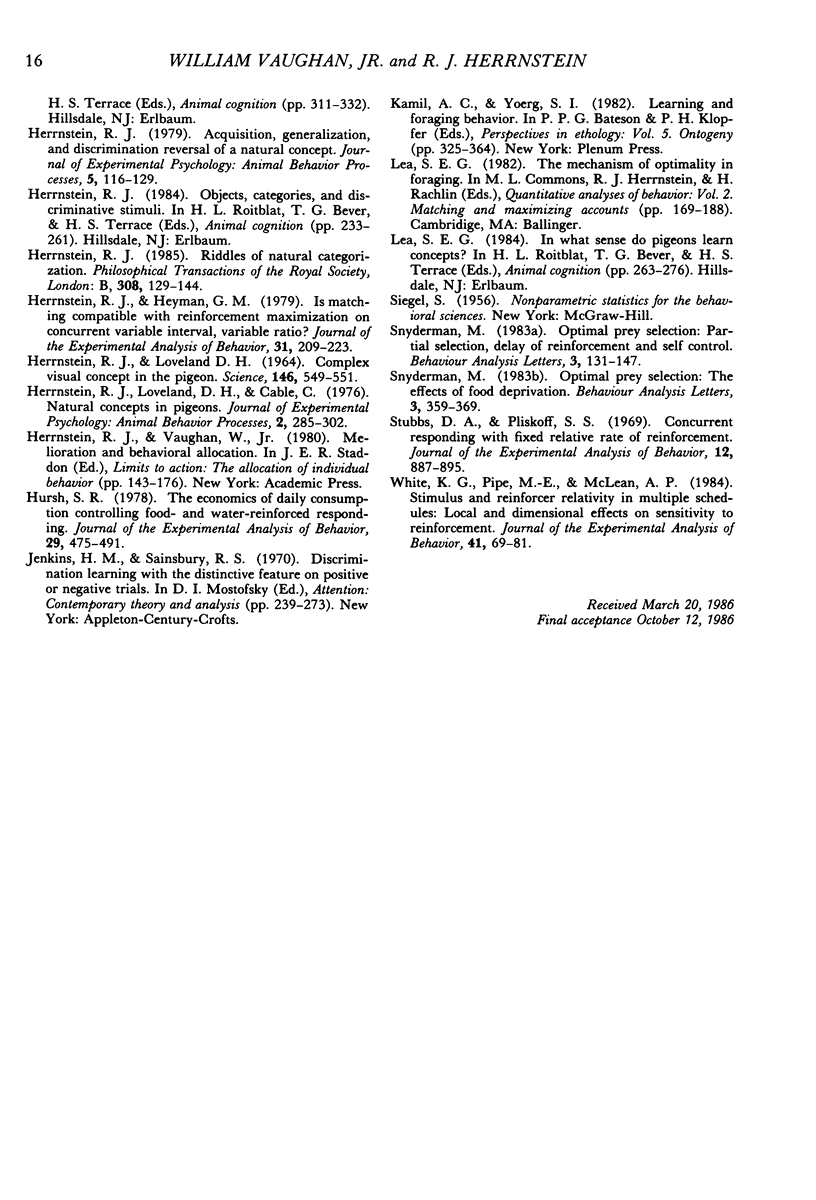
Selected References
These references are in PubMed. This may not be the complete list of references from this article.
- Baum W. M. On two types of deviation from the matching law: bias and undermatching. J Exp Anal Behav. 1974 Jul;22(1):231–242. doi: 10.1901/jeab.1974.22-231. [DOI] [PMC free article] [PubMed] [Google Scholar]
- Burgess I. S., Wearden J. H. Superimposition of response-independent reinforcement. J Exp Anal Behav. 1986 Jan;45(1):75–82. doi: 10.1901/jeab.1986.45-75. [DOI] [PMC free article] [PubMed] [Google Scholar]
- Davison M. C., Tustin R. D. The relation between the generalized matching law and signal-detection theory. J Exp Anal Behav. 1978 Mar;29(2):331–336. doi: 10.1901/jeab.1978.29-331. [DOI] [PMC free article] [PubMed] [Google Scholar]
- Findley J. D. Preference and Switching under Concurrent Scheduling. J Exp Anal Behav. 1958 Apr;1(2):123–144. doi: 10.1901/jeab.1958.1-123. [DOI] [PMC free article] [PubMed] [Google Scholar]
- HERRNSTEIN R. J., LOVELAND D. H. COMPLEX VISUAL CONCEPT IN THE PIGEON. Science. 1964 Oct 23;146(3643):549–551. doi: 10.1126/science.146.3643.549. [DOI] [PubMed] [Google Scholar]
- Hernstein R. J., Loveland D. H., Cable C. Natural concepts in pigeons. J Exp Psychol Anim Behav Process. 1976 Oct;2(4):285–302. doi: 10.1037//0097-7403.2.4.285. [DOI] [PubMed] [Google Scholar]
- Herrnstein R. J. Acquisition, generalization, and discrimination reversal of a natural concept. J Exp Psychol Anim Behav Process. 1979 Apr;5(2):116–129. doi: 10.1037//0097-7403.5.2.116. [DOI] [PubMed] [Google Scholar]
- Herrnstein R. J., Heyman G. M. Is matching compatible with reinforcement maximization on concurrent variable interval variable ratio? J Exp Anal Behav. 1979 Mar;31(2):209–223. doi: 10.1901/jeab.1979.31-209. [DOI] [PMC free article] [PubMed] [Google Scholar]
- Hursh S. R. The economics of daily consumption controlling food- and water-reinforced responding. J Exp Anal Behav. 1978 May;29(3):475–491. doi: 10.1901/jeab.1978.29-475. [DOI] [PMC free article] [PubMed] [Google Scholar]
- Stubbs D. A., Pliskoff S. S. Concurrent responding with fixed relative rate of reinforcement. J Exp Anal Behav. 1969 Nov;12(6):887–895. doi: 10.1901/jeab.1969.12-887. [DOI] [PMC free article] [PubMed] [Google Scholar]
- White K. G., Pipe M. E., McLean A. P. Stimulus and reinforcer relativity in multiple schedules: Local and dimensional effects on sensitivity to reinforcement. J Exp Anal Behav. 1984 Jan;41(1):69–81. doi: 10.1901/jeab.1984.41-69. [DOI] [PMC free article] [PubMed] [Google Scholar]


